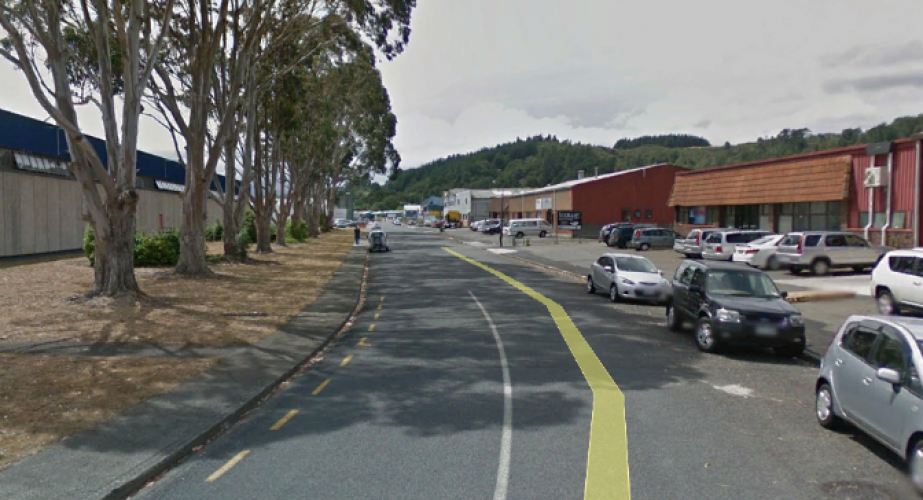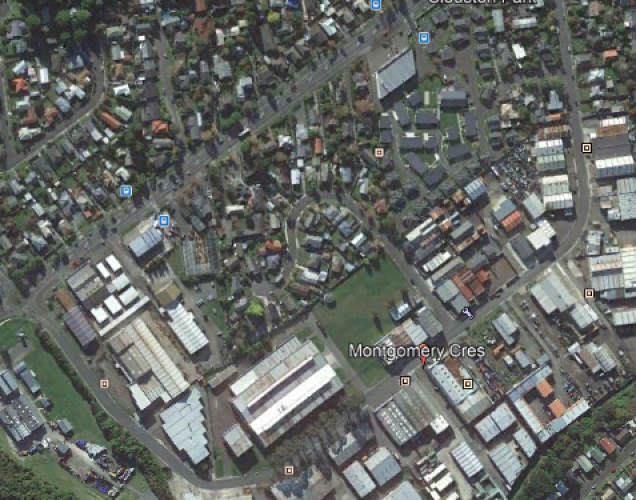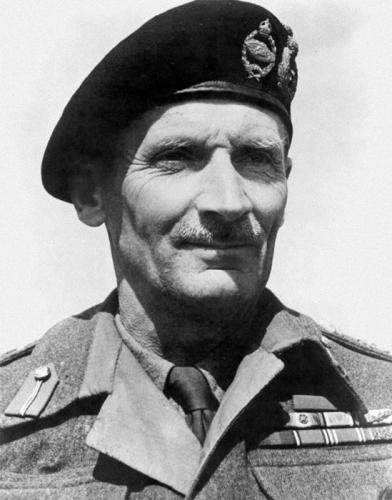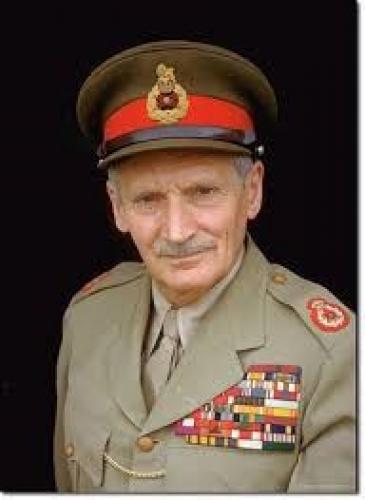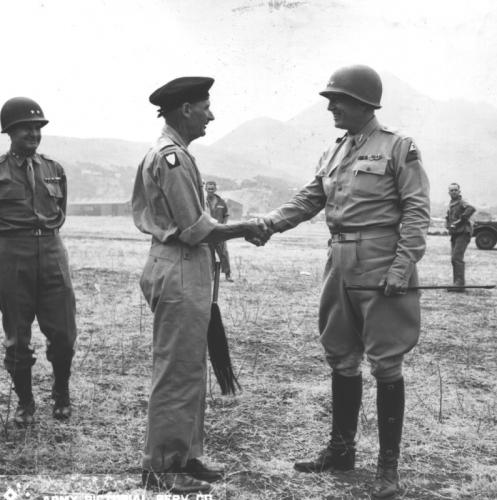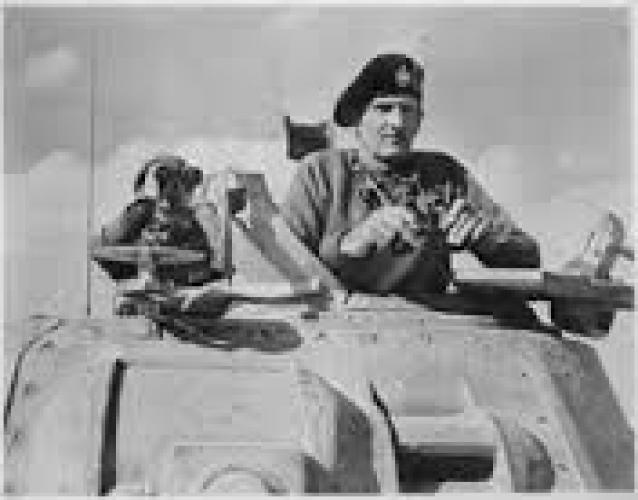105 Montgomery Crescent Upper Hutt
Reason for the name
This street was named in honour of Field Marshal Bernard Law Montgomery, 1st Viscount Montgomery of Alamein, KG, GCB, DSO, PC, DL. He was a British Army Officer who commanded New Zealand troops in WW2.
This Upper Hutt street is one of three streets in an industrial area north of the centre of the city. All three streets are named in honour of senior British officers from WW2. The other two streets are Cunningham Road Admiral Cunningham) and Mountbatten Grove (Lord Mountbatten)
Field Marshal Bernard Law Montgomery, 1st Viscount Montgomery of Alamein, KG, GCB, DSO, PC, DL 17 November 1887 – 24 March 1976), nicknamed "Monty" and "The Spartan General", was a senior British Army officer who fought in both the First World War and the Second World War.
He saw action in the First World War as a junior officer of the Royal Warwickshire Regiment. At Méteren, near the Belgian border at Bailleul, he was shot through the right lung by a sniper, during the First Battle of Ypres. He returned to the Western Front as a general staff officer and took part in the Battle of Arras in April/May 1917. He also took part in the Battle of Passchendaele in late 1917 before finishing the war as chief of staff of the 47th (2nd London) Division.
In the inter-war years he commanded the 17th (Service) Battalion, Royal Fusiliers and, later, the 1st Battalion, Royal Warwickshire Regiment before becoming commander of 9th Infantry Brigade and then General Officer Commanding (GOC) 8th Infantry Division.
During the Second World War he commanded the British Eighth Army from August 1942 in the Western Desert until the final Allied victory in Tunisia in May 1943. This command included the Second Battle of El Alamein, a turning point in the Western Desert Campaign. He subsequently commanded the British Eighth Army during the Allied invasion of Sicily and the Allied invasion of Italy. He was in command of all Allied ground forces during Operation Overlord from the initial landings until after the Battle of Normandy. He then continued in command of the 21st Army Group for the rest of the campaign in North West Europe. As such he was the principal field commander for the failed airborne attempt to bridge the Rhine at Arnhem, and the Allied Rhine crossing. On 4 May 1945 he took the German surrender at Lüneburg Heath in Northern Germany.
After the war he became Commander-in-Chief of the British Army of the Rhine (BAOR) in Germany and then Chief of the Imperial General Staff (1946–1948). From 1948 to 1951 he served as Chairman of the Commanders-in-Chief Committee of the Western Union. He then served as NATO's Deputy Supreme Allied Commander Europe until his retirement in 1958.
From Wikipedia, the free encyclopedia
Author: Poppy Places Trust
World War I:
Sent to India, Montgomery was promoted to lieutenant in 1910. Back in Britain, he received an appointment as battalion adjutant at the Shorncliffe Army Camp in Kent. With the outbreak of World War I, Montgomery deployed to France with the British Expeditionary Force (BEF). Assigned to Lieutenant General Thomas Snow's 4th Division, his regiment took part in the fighting at Le Cateau on August 26, 1914. Continuing to see action during the retreat from Mons, Montgomery was badly wounded during a counterattack near Méteren on October 13, 1914. This saw him hit through the right lung by a sniper before another round struck him in the knee.
Awarded the Distinguished Service Order, he was appointed as a brigade major in the 112th and 104th Brigades. Returning to France in early 1916, Montgomery served as a staff officer with the 33rd Division during the Battle of Arras. The following year, he took part in the Battle of Passchendaele as a staff officer with IX Corps. During this time he became known as a meticulous planner who worked tirelessly to integrate the operations of the infantry, engineers, and artillery. As the war concluded in November 1918, Montgomery held the temporary rank of lieutenant colonel and was serving as chief of staff for the 47th Division.
In France:
Serving in General Alan Brooke's II Corps, Montgomery earned his superior's praise. With the German invasion of the Low Countries, 3rd Division performed well and following the collapse of the Allied position was evacuated through Dunkirk. During the final days of the campaign, Montgomery led II Corps as Brooke had been recalled to London. Arriving back in Britain, Montgomery became an outspoken critic of the BEF's high command and began a feud with the commander of Southern Command, Lieutenant General Sir Claude Auchinleck. Over the next year, he held several posts responsible for the defense of southeastern Britain.
North Africa:
In August 1942, Montgomery, now a lieutenant general, was appointed to command the Eighth Army in Egypt following the death of Lieutenant-General William Gott. Serving under General Sir Harold Alexander, Montgomery took command on August 13 and began a rapid reorganization of his forces as well as worked to reinforce the defenses at El Alamein. Making numerous visits to the front lines, he diligently endeavored to raise morale. In addition, he sought to unite land, naval, and air units into an effective combined arms team.
Anticipating that Field Marshal Erwin Rommel would attempt to turn his left flank, he strengthened this area and defeated the noted German commander at the Battle of Alam Halfa in early September. Under pressure to mount an offensive, Montgomery began extensive planning for striking at Rommel. Opening the Second Battle of El Alamein in late October, Montgomery shattered Rommel's lines and sent him reeling east. Knighted and promoted to general for the victory, he maintained pressure on Axis forces and turned them out of successive defensive positions including the Mareth Line in March 1943.
Sicily & Italy:
With the defeat of Axis forces in North Africa, planning began for the Allied invasion of Sicily. Landing in July 1943 in conjunction with Lieutenant General George S. Patton's US Seventh Army, Montgomery's Eighth Army came ashore near Syracuse. While the campaign was a success, Montgomery's boastful style ignited a rivalry with his flamboyant American counterpart. On September 3, Eighth Army opened the campaign in Italy by landing in Calabria. Joined by Lieutenant General Mark Clark's US Fifth Army, which landed at Salerno, Montgomery began a slow, grinding advance up the Italian peninsula.
D-Day:
On December 23, 1943, Montgomery was ordered to Britain to take command of the 21st Army Group which comprised all of the ground forces assigned to the invasion of Normandy. Playing a key role in the planning process for D-Day, he oversaw the Battle of Normandy after Allied forces began landing on June 6. During this period, he was criticized by Patton and General Omar Bradley for his initial inability to capture the city of Caen. Once taken, the city was used as the pivot point for the Allied breakout and crushing of German forces in the Falaise pocket.
Push to Germany:
As most of the Allied troops in Western Europe rapidly became American, political forces prevented Montgomery from remaining Ground Forces Commander. This title was assumed by the Supreme Allied Commander, General Dwight Eisenhower, while Montgomery was permitted to retain the 21st Army Group. In compensation, Prime Minister Winston Churchill had Montgomery promoted to field marshal. In the weeks following Normandy, Montgomery succeeded in convincing Eisenhower to approve Operation Market-Garden which called for direct thrust towards the Rhine and Ruhr Valley utilizing large numbers of airborne troops. Uncharacteristically daring for Montgomery, the operation was also poorly planned with key intelligence about enemy strength overlooked. As a result, the operation was only partially successful and resulted in the destruction of the 1st British Airborne Division.
In the wake of this effort, Montgomery was directed to clear the Scheldt so that the port of Antwerp could be opened to Allied shipping. On December 16, the Germans opened the Battle of the Bulge with a massive offensive. With German troops breaking through the American lines, Montgomery was ordered to take command of US forces north of the penetration to stabilize the situation. He was effective in this role and was ordered to counterattack in conjunction with Patton's Third Army on January 1 with the goal of encircling the Germans. Not believing his men were ready, he delayed two days allowing many of the Germans to escape. Pressing on to the Rhine, his men crossed the river in March and helped encircle German forces in the Ruhr. Driving across northern Germany, Montgomery occupied Hamburg and Rostock before accepting a German surrender on May 4.
Later Years:
After the war, Montgomery was made commander of the British occupation forces and served on the Allied Control Council. In 1946, he was elevated to Viscount Montgomery of Alamein for his accomplishments. Serving as Chief of the Imperial General Staff from 1946 to 1948, he struggled with the political aspects of the post. Beginning in 1951, he served as deputy commander of NATO's European forces and remained in that position until his retirement in 1958. Increasingly known for his outspoken views on a variety of topics, his postwar memoirs were severely critical of his contemporaries. Montgomery died on March 24, 1976, and was buried at Binsted.

